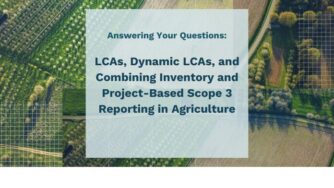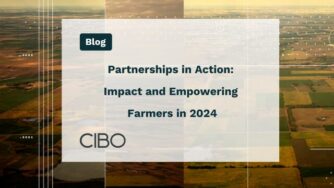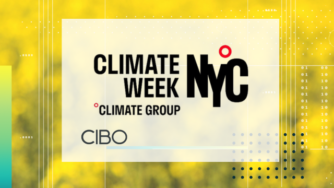Corporate and product inventories are designed to assess the total emissions associated with their subjects. An emission reduction project is intended to measure how much emissions are reduced when specific actions are taken. This is an important difference: projects are designed to connect a cause (e.g., reduced fertilizer use in agriculture) with its effect (reducing NO2 emissions).
As used in the emissions reductions world, a project is something that can be funded in order to reduce emissions. They are used extensively in carbon credit systems that tie the cost of changes (such as reducing fertilizer for growing corn, including any impacts on crop yield) to the value of resulting carbon credits (the effect). Whenever cost is less than the resulting value, there is potential for carbon credit buyers to fund these projects to reduce emissions.
Any credits that emerge from a project are real assets. Real money is spent to buy them. Buyers and auditors must be assured that the credits are worth what they are paying for, namely an assurance that the project lowered net emissions. To provide this assurance, most carbon programs delivering credits require that each project satisfy several criteria before getting started:
Additionality
Proof that the emission reductions would not have happened anyway. The following, for example, would not be considered additional:
- Changes that are legally mandated, such as EPA-manded emission controls at power plants.
- Changes that are already widely adopted: if a practice is already widely used, and the project proposes to apply that practice in a business that has lagged behind in adopting it, then the project is typically not considered additional since the business would likely have adopted it anyway. Programs differ in how they define “common practices”, but each has specific rules.
- Changes that reduce operating costs or increase profits: if a practice change would pay for itself without additional funding from carbon programs, then businesses will typically adopt it anyway.
Leakage (or “secondary effects”)
Proof that reduced emissions do not result in higher emissions elsewhere. A common example is a practice change that reduces productivity, such as crop yields. Reduced productivity means the shortfall will be met by other, likely higher-emitting, producers. Or additional land will be converted from forest or other natural ecosystems to cover the shortfall, resulting in destruction of natural carbon pools and higher emissions. There are many ways emissions can “leak”, and most carbon programs have rules to prove that these secondary effects are understood and quantified.
No other harm
Proof that the practice change will not cause some other environmental or social harm. For example if a proposed project reduces emissions but leads to unavoidable water security or pollution problems, most carbon programs will not accept it.
Learn more by reading The Definitive Guide To Carbon and Climate Commitments.



